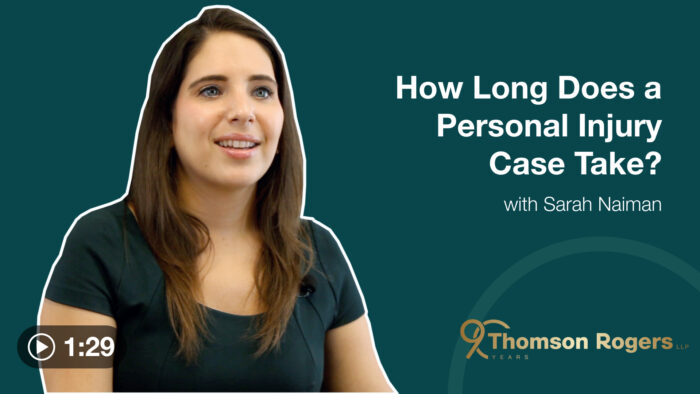Accident Benefit Article, Personal Injury Law
Comparison of Key Changes to Accident Benefits from Bill 59 to Bill 198
September 1, 2004
| Bill 59 (Nov. 1, 1996 to Sept. 30, 2003) | Bill 198 (Oct. 1, 2003 to present) | |
| Accident Benefits | ||
| Important Time Limits | Notice to the accident benefits insurer within 30 days of the accident. | Notice to the accident benefits insurer within 7 days of the accident. (Where notice received after 7 days, insurer may delay determining benefits entitlement for up to 45 days after notice received.)An application for accident benefits must be submitted within 30 days of receipt of application forms from the insurance company. Many other time limits from SABS that is applicable to our Health Care Professionals i.e. re: Assessment Plan, Tx Plan, DAC. |
| Examinations under Oath | N/A | Insured person may be examined by insurer under oath. |
| Definition of “Catastrophic Injury” | Catastrophic Injury includes:
N/A
N/A |
Catastrophic Injury includes:
|
| Examinations and Assessments | Insurer to pay all reasonable expenses incurred by or on behalf of insured person for the purposes of attending an examination or assessment. | Insurer not required to pay for an assessment unless it is reasonably required and the insurer approves the assessment.Approval is obtained by way of Application for Approval of an Assessment or Examination (OCF-22). Approval must be obtained prior to assessment except first three assessments to complete a Treatment Plan do not require prior approval if assessments cost $180 or less, where there is one assessment/provider. Also, prior approval is not required where immediate risk of harm to the individual makes obtaining prior approval impractical, or for completing a Form 1or for assessment for a determination of catastrophic impairment while insured is in hospital.Where prior approval is sought, the insurer must respond to the Assessment Plan in two business days, if the cost is $180 or less, and within five business days where the cost is more than $180. If approval is required and not sought, the insurer is not required to pay and there is no right of dispute. If approval is sought and denied, the request for assessment goes to a DAC. |
| Pre-Approved Framework Guidelines | N/A | Pre-approved treatment framework (PAF) developed for modest injuries defined as WAD I and WAD II injuries. Insured person must be assessed within 21 days following accident. Treatment plans not required unless requesting additional goods and services |
| Fast Track DACs | N/A | If a designated assessment is conducted to determine whether there are medical or rehabilitation benefits payable other than under a PAF, or the designated assessment is required because the insurer has denied all or part of an OCF-22 application (as discussed above), the DAC shall deliver its report within five days. (See Fast Track DAC intake protocol set out in the Medical and Rehabilitation Designated Assessment Centre’s DAC Assessment Manual – August 2003.) |
| DAC Referral Process | Individuals assessed by closest qualified DAC. | Insurers can suggest DAC. If individual does not agree, Financial Services Commission appoints DAC. |
| Treatment Plans | Required for insurer approval of treatment | Required for insurer approval of treatment (goods and services)Not required for claiments in the PAF (unless request for additional goods and services not covered by PAF) |
Obligations on the Health Professional responsible for preparing and supervising the Treatment Plan:
|
NOTE: A summary to changes to TORT from Bill 59 to Bill 198 will appear in the next issue of the Accident Benefit Reporter.
Share this






